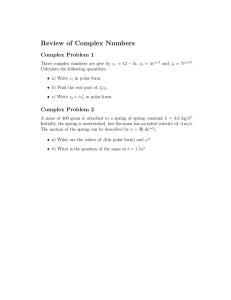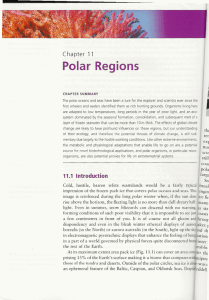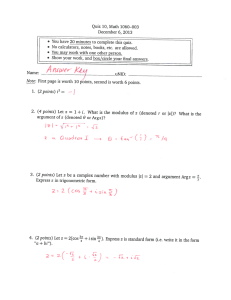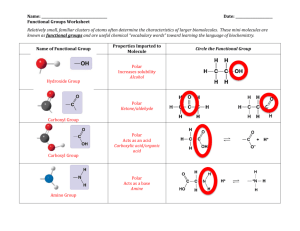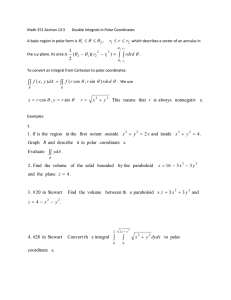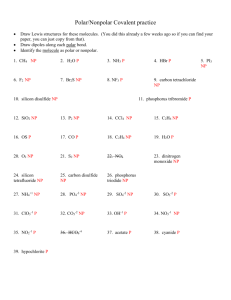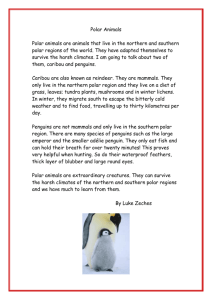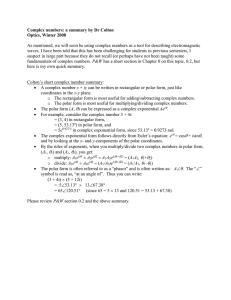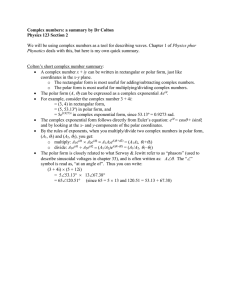Combining qualitative and quantitative methods for assessing the
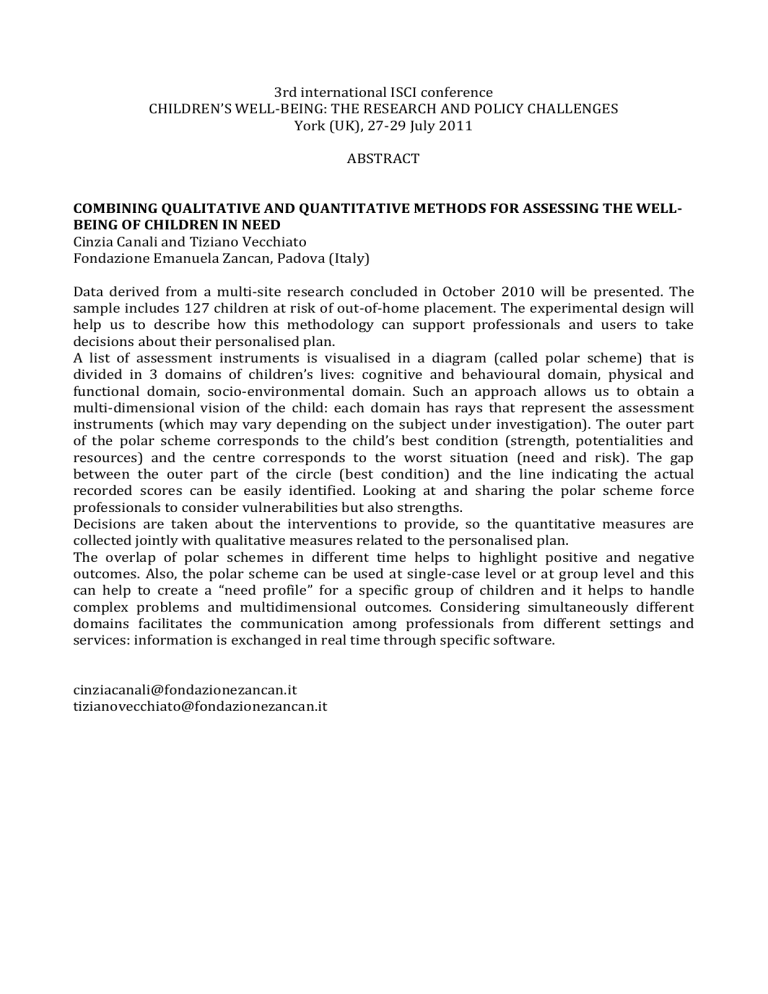
3rd international ISCI conference
CHILDREN’S WELL-BEING: THE RESEARCH AND POLICY CHALLENGES
York (UK), 27-29 July 2011
ABSTRACT
COMBINING QUALITATIVE AND QUANTITATIVE METHODS FOR ASSESSING THE WELL-
BEING OF CHILDREN IN NEED
Cinzia Canali and Tiziano Vecchiato
Fondazione Emanuela Zancan, Padova (Italy)
Data derived from a multi-site research concluded in October 2010 will be presented. The sample includes 127 children at risk of out-of-home placement. The experimental design will help us to describe how this methodology can support professionals and users to take decisions about their personalised plan.
A list of assessment instruments is visualised in a diagram (called polar scheme) that is divided in 3 domains of children’s lives: cognitive and behavioural domain, physical and functional domain, socio-environmental domain. Such an approach allows us to obtain a multi-dimensional vision of the child: each domain has rays that represent the assessment instruments (which may vary depending on the subject under investigation). The outer part of the polar scheme corresponds to the child’s best condition (strength, potentialities and resources) and the centre corresponds to the worst situation (need and risk). The gap between the outer part of the circle (best condition) and the line indicating the actual recorded scores can be easily identified. Looking at and sharing the polar scheme force professionals to consider vulnerabilities but also strengths.
Decisions are taken about the interventions to provide, so the quantitative measures are collected jointly with qualitative measures related to the personalised plan.
The overlap of polar schemes in different time helps to highlight positive and negative outcomes. Also, the polar scheme can be used at single-case level or at group level and this can help to create a “need profile” for a specific group of children and it helps to handle complex problems and multidimensional outcomes. Considering simultaneously different domains facilitates the communication among professionals from different settings and services: information is exchanged in real time through specific software. cinziacanali@fondazionezancan.it tizianovecchiato@fondazionezancan.it
